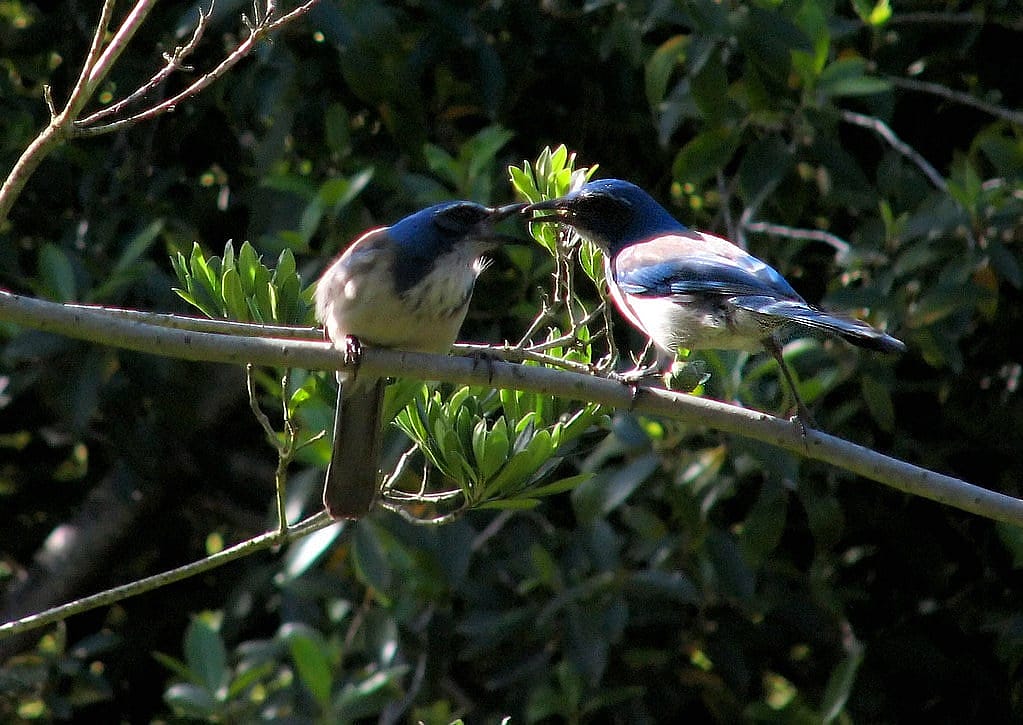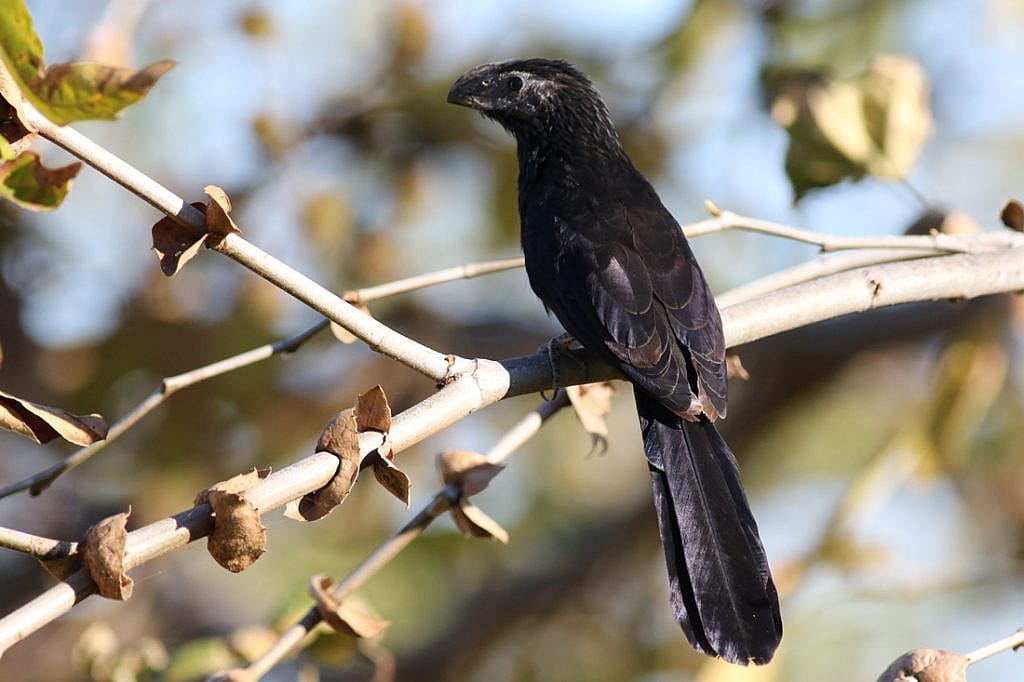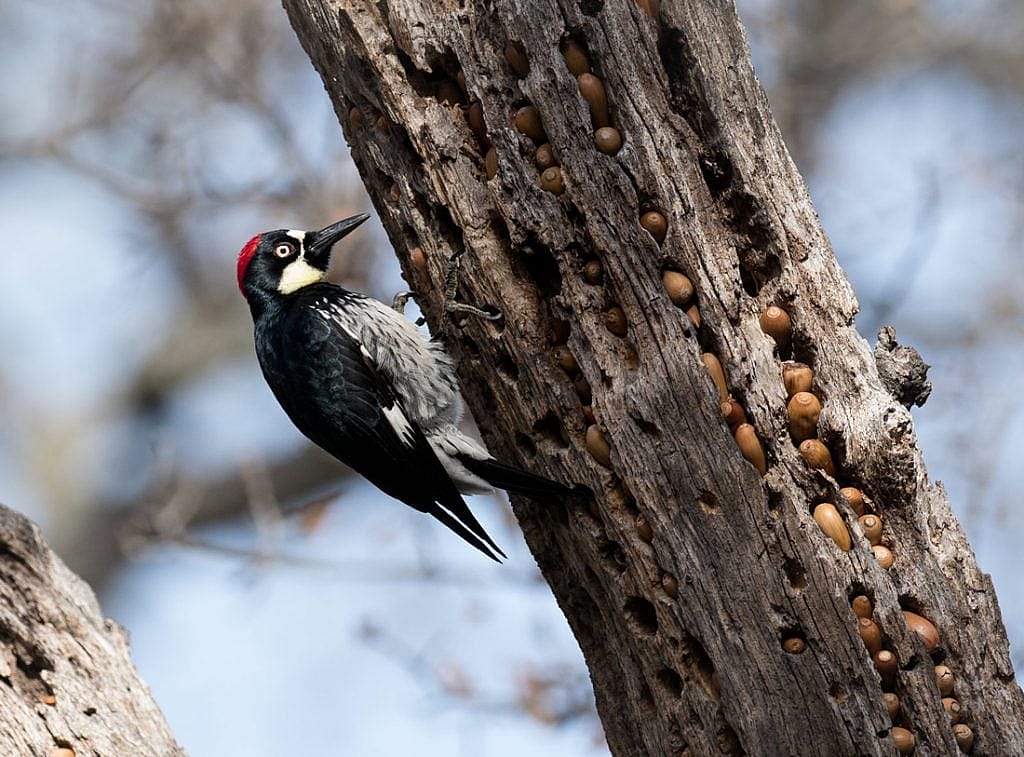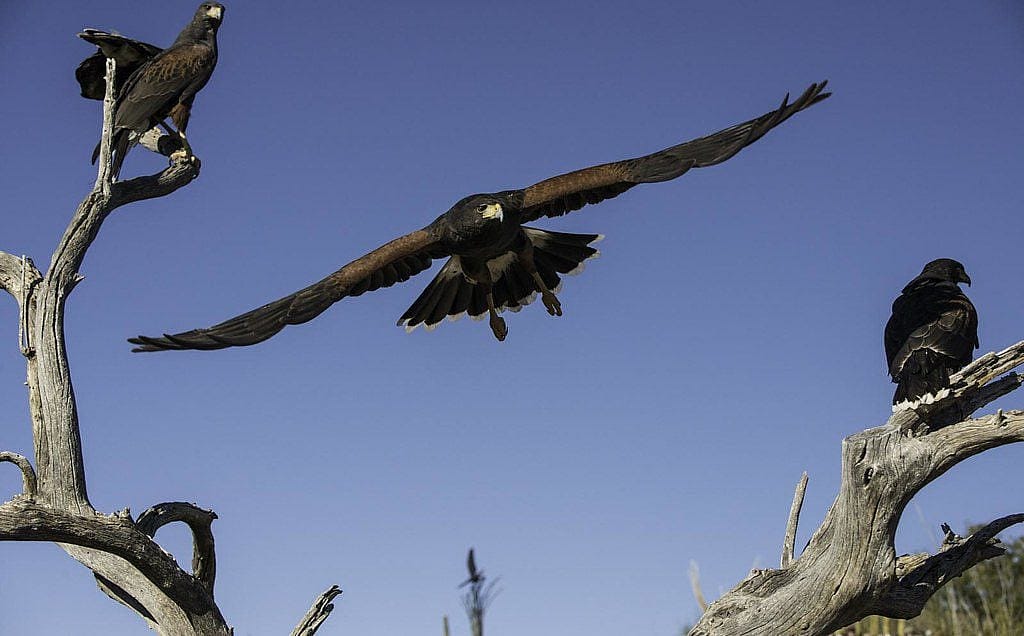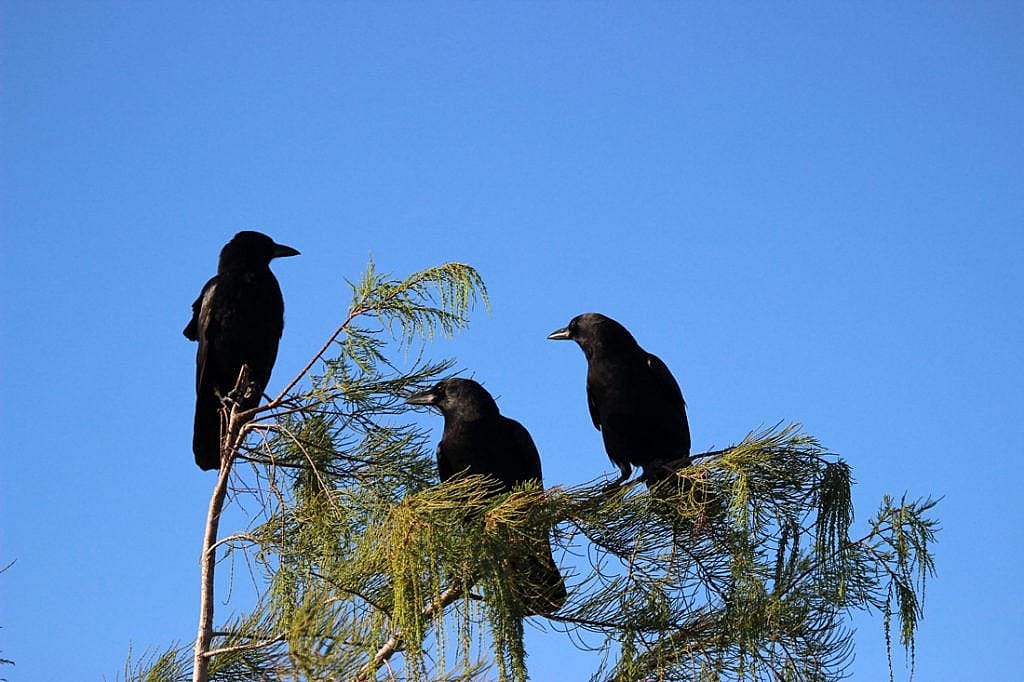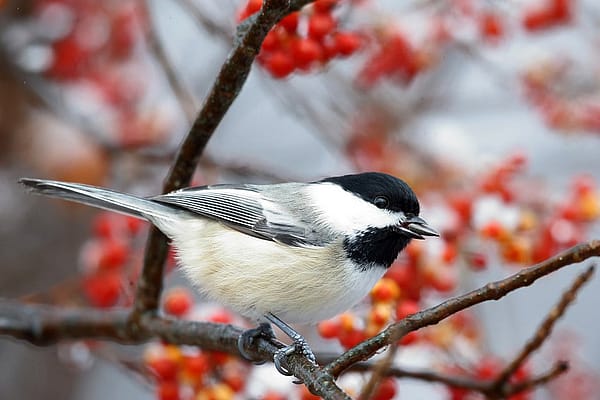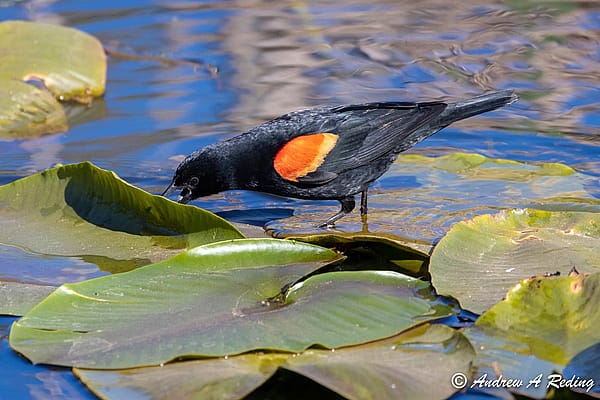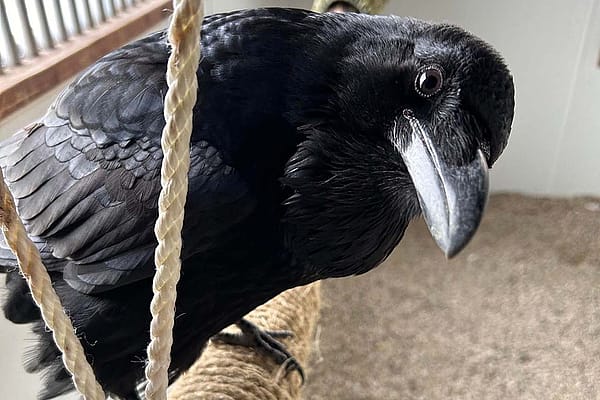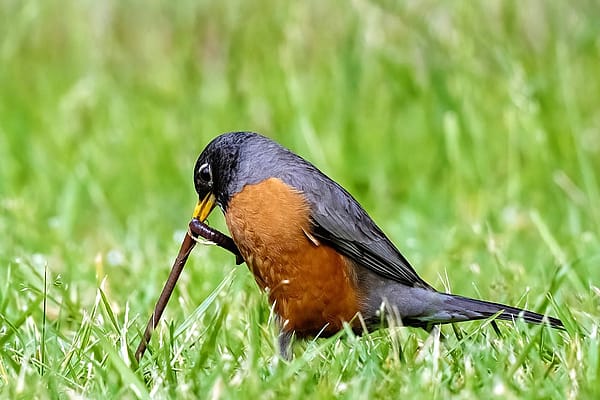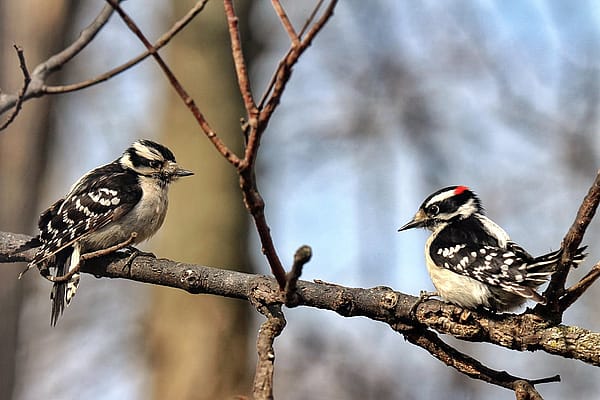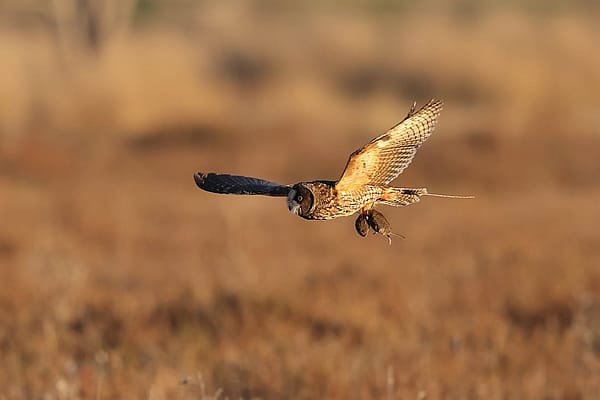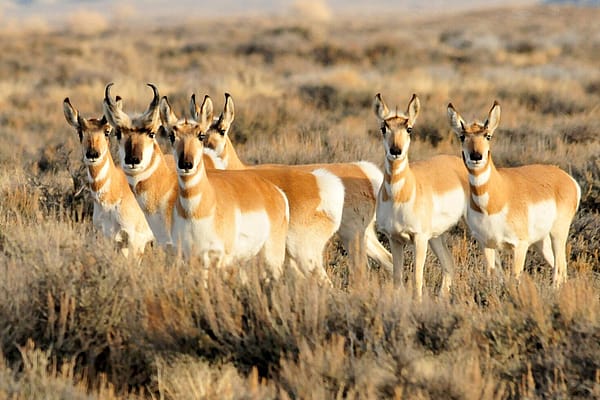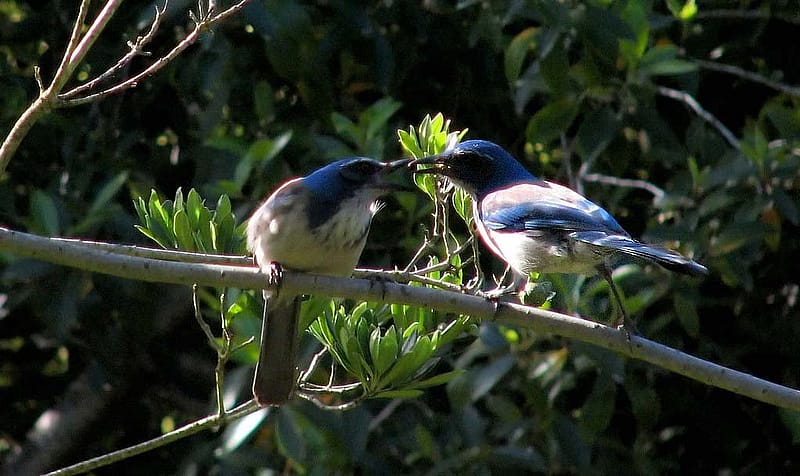
Cooperative Breeding: Helpers at the Nest
Cooperative breeding, also called communal breeding, occurs in about 3% of the world’s bird species. This happens when more than two birds of the same species work together in rearing the young from one nest. There are two types of helpers: adult non-breeders that help to protect and rear the young, but are not related, and helpers that are related in some way. In this blog I will briefly describe seven birds that commonly utilize helpers, plus one surprising rare occurrence.
Birds that Never Nest Without Helpers
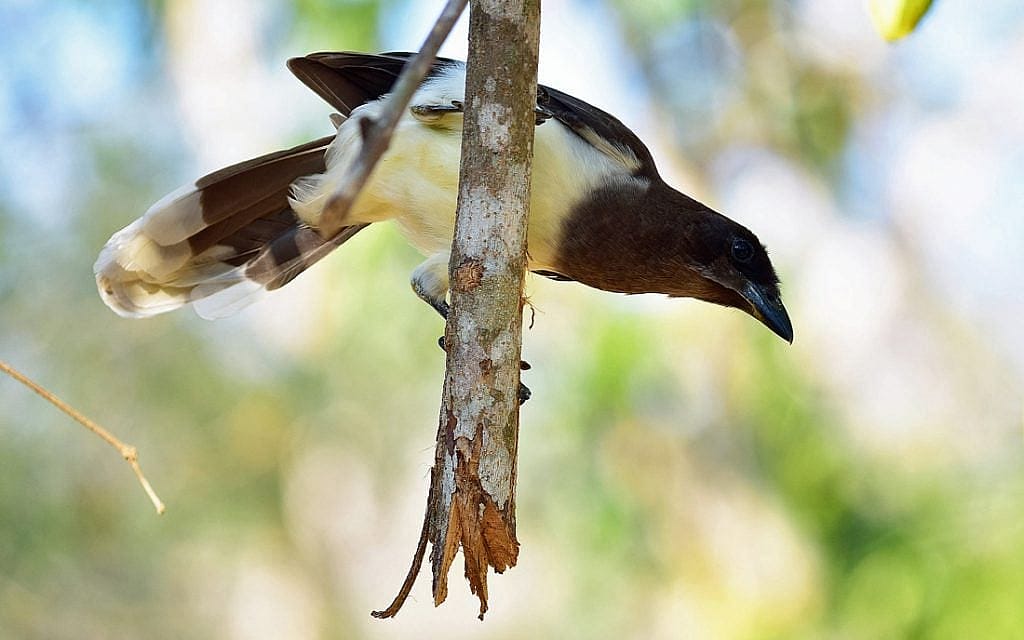
Brown Jays are found in the Lower Rio Grande Valley of Texas south to northwestern Panama. These Jays have never been observed breeding without helpers. Traveling in small flocks, they make nesting a responsibility for the entire group. They often construct a single nest with only one female laying eggs. When the chicks fledge (leave the nest) the helpers will also work to teach the fledglings how to find food and recognize danger. In addition to chick care, helpers will assist in building and defending the nest. As a reward for the future, some helpers may inherit the nesting territory when they come into breeding age.
Only in Florida
Only Scrub-jays that reside in Florida practice cooperative breeding, though not all Scrub-jays in the state practice this. The communal jays form permanent group-defended territories that generally center on one monogamous pair with one to six helpers. Usually these helpers are offspring of the mated pair from previous seasons. These non-breeders will help with defense and care of the chicks.
So why isn’t this practiced in other states the Scrub-jay’s reside in? Florida Scrub-jays have lost a lot of their natural oak scrub habitat. Since so much of the available habitat is occupied to capacity, young birds are less likely to find suitable territory of their own. It is believed that this factor is contributing to the Florida population’s frequent practice of cooperative breeding. In other states the Scrub-jay population is not restricted to small pockets of habitat. Therefore, the young have a much higher chance of finding their own breeding territory. For that reason it is believed that in other states Scrub-jays have no need to stay within a family group.
A Close Relative of Scrub Jays
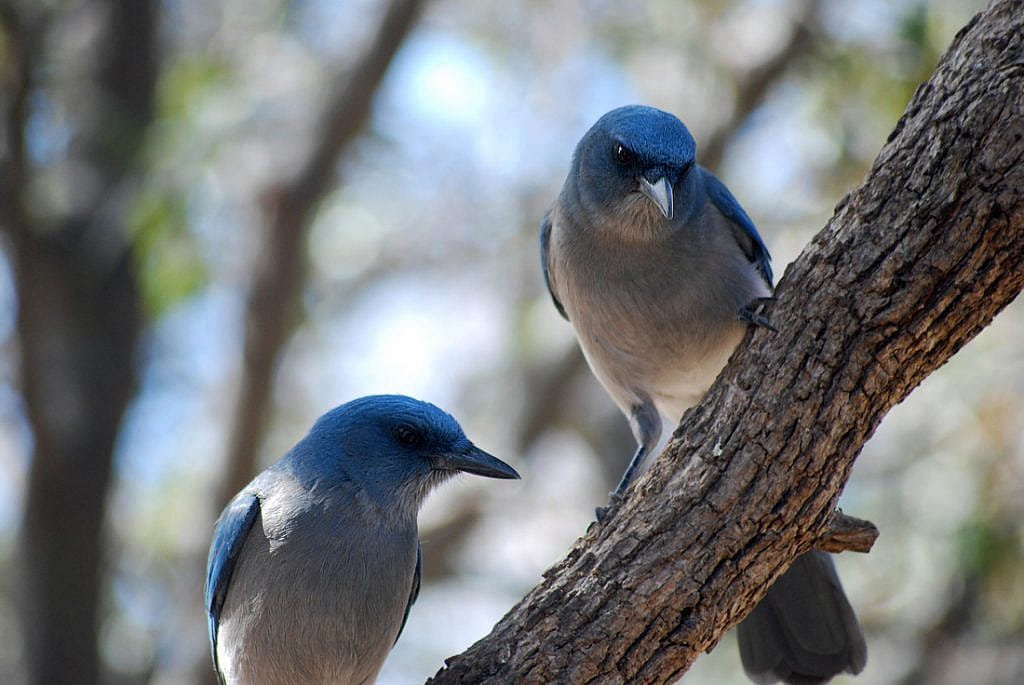
The Mexican Jay lives in the Southwestern part of the U.S. in permanent group-defended territories. These groups range from 5 to 25 birds. There may be two or three breeding pairs within the group, each with their own nest. Only the breeding pairs engage in nest building, incubation, and brooding. The other members in the group do other jobs such as calling out alarms and defending the nest. This defense may include group mobbing of other birds. Some helpers may also participate in feeding the incubating/brooding females and chicks. Non-breeders who help feed may bring food to several nests, while others provide for only one. However, not all behavior is cooperative within the group. There may be theft of nest-lining materials, and in some cases, eggs are tossed out of rival nests.
Birds That Work Cooperatively to Build a Single Nest
The Groove-billed Ani form permanent territories which they defend as a group. Within these territories it is common to find one to four monogamous breeding pairs. Members of the group work cooperatively to build one nest. All females of the breeding pairs lay their eggs in this single nest. Incubation and care of the chicks are shared by all members of the group.
Like the Mexican Jays, this is not always advantageous. If the clutch size is large, some eggs tend to drift to the bottom. These bottom eggs may not get the needed incubation to hatch. Although the breeding Ani appear to work cooperatively, it is not always the case. Competing female Anis may work to increase the probability of their own eggs successfully hatching. Researchers report that one such behavior is that breeding females may throw other females’ eggs out of the nest. Even with this increased competitive behavior, researchers have concluded that multi-pair groups fledge more young per bird than single pairs living in similar habitats do.
Polygamous Birds
Acorn Woodpeckers form groups of up to 15 members. These birds are well known for storing acorns for future use. Within their territories, Acorn Woodpeckers cooperate in the defense and maintenance of these granaries. These groups generally contain parents, siblings, and cousins. Typically up to four males may mate with one female, sometimes two females. All the eggs are laid in a single nest with care of the chicks shared by all members in the group. However, like the Ani and Mexican-Jay, behavioral interference caused by competition between breeding females may lead to some eggs being thrown out of the nest.
Hawks that Work Together All Year
Harris Hawks frequently breed and live in communal social groups. These groups may consist of related and non-related birds. They establish a territory which is occupied and defended by the group all year. Working together they are known to have complex cooperative hunting strategies. Groups may consist of up to seven hawks including one breeding couple or multiple breeders. The breeding females will do most of the egg incubation and brooding of the nestlings. Other members of the group will deliver prey and defend the territory.
Not Needed, But Often Do
Helpers are not a necessary part of a crow’s successful breeding, though it is not an uncommon practice. Offspring often remain with their parents from one to six years. During this time they will participate in the raising of future siblings. Cornell reports that a family may reach the size of 15 crows. This study also reported that 80% of the nests they observed had helpers. When helpers reach breeding age they leave the family to establish their own breeding territory. When this occurs a few of the sibling helpers may leave the original group to remain with and help out the newly breeding sibling.
A Rarely Documented Occurrence of Cooperative Breeding
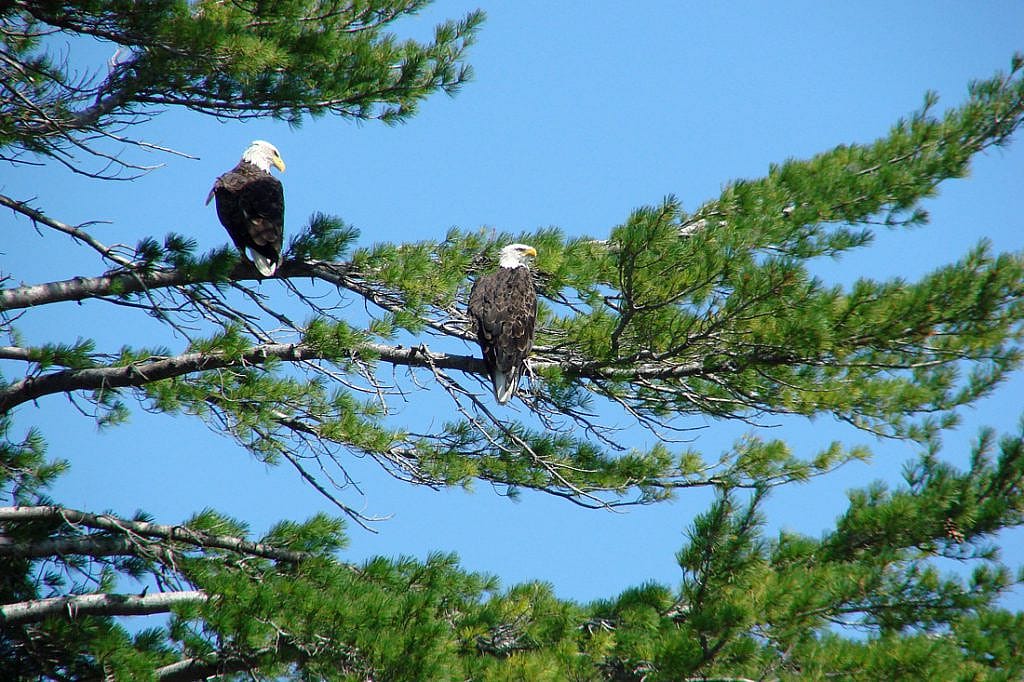
While uncommon, Bald Eagle trios have been occasionally documented. They were observed in Alaska in 1977, in Minnesota in 1983, and in California in 1992. Many people are currently fascinated by a trio of bald eagles consisting of two males and one female nesting in the Upper Mississippi River National Wildlife area. Even when the original female died, a new female joined the two males and they continue to work together to raise chicks.
For the complete story about this nest and a photo of the three eagles, click this link:
https://www.audubon.org/news/a-rare-bald-eagle-trio-two-dads-and-mom-captivates-webcam-fans
Photo Credits:
Opening photo of Brown Jay by orientalizing, Attribution-NonCommercial-NoDerives 2,0 Generic License
Scrub Jays by Eliya Selhub, Attribution 2.0 Generic License
Mexican Jays, by Jeff Hart, Attriibution, 2.0 Generic License (This license allows for editing. I have changed the contrast, and have sharpened the photo somewhat.)
Groove-billed Ani by jacksnipe1990, Attribution-NonCommercial-NoDerives 2,0 Generic License
Acorn Woodpecker at Granary by Ingrid Taylar, Attribution-NonCommercial 2.0 Generic License
Two perched, and one Harris Hawk in flight by Katie Moore, Attribution-NonCommercial-NoDerives 2,0 Generic License
Crows by cuatrok77, Attribution-ShareAlike 2.0 Generic License
Pair of Bad Eagles by author, Attribution-NoDerives 2,0 Generic License
Written By
Anne Hay
Anne Hay has a Bachelor's degree in Elementary Education and a Master's in Computers in Education. She spent most of her working years teaching third grade at Livingston School in Cody, Wyoming. After retiring she began doing a variety of volunteer work for the Buffalo Bill Center of the West’s Draper Natural History Museum. Anne loves nature and has a concern for the environment. She believes that educating the public, so that they will have a better understanding and appreciation for the natural world, is very important. Because of this belief, volunteering at the Center is a perfect fit. She spends time in the Draper Lab, observing eagle nests for Dr. Charles Preston’s long-term research project on nesting golden eagles, writing observation reports of raptor sightings in the Bighorn Basin, and working with the Draper Museum Raptor Experience. Anne states that, “Having a bird on my glove, is one of my all time favorite things in life.”
